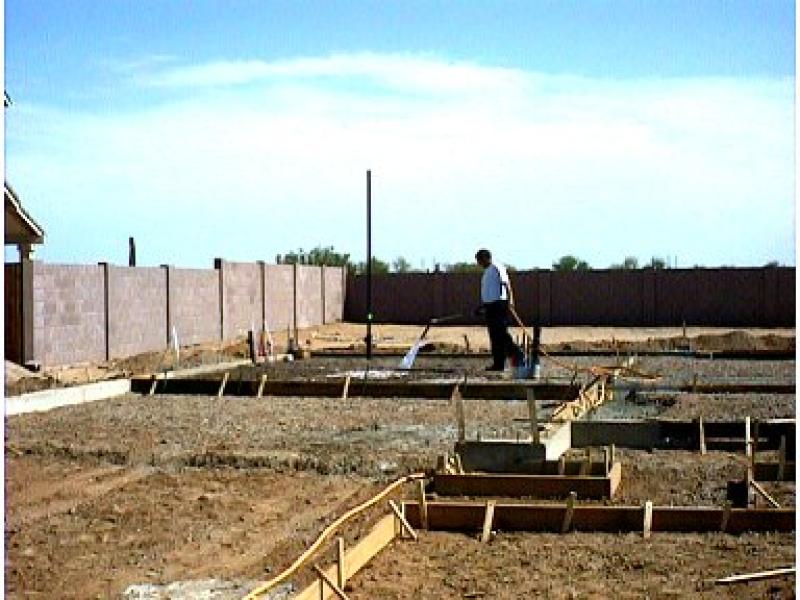
NOTE: This guide is for termite treatments made before or during construction.
Termite treatments made before or during construction are greatly impacted by the locations where homes are being built. As Arizona's population grows, more homes are being built on reclaimed desert land. The number of subterranean termite colonies in desert areas is large, increasing the potential for infestation.
1. What is a termite treatment made before or during construction?
It is the creation of a chemical barrier between the soil and the concrete floor of a structure. Done properly, the barrier can help prevent subterranean termites from infesting the wood in the structure.
Termite treatments made before or during construction must be performed by a licensed pest control operator. Termiticide used must be applied in a manner consistent with the product label, and the rules and regulations of the Arizona Pest Management Division.
2. How do I know if my home needs a termite treatment made before or during construction?
The Federal Housing Administration (FHA), Veterans Administration Housing and Urban Development (VA HUD) and the laws in many communities of Arizona require that any building built as a single family residence or a duplex, or which could be sold with FHA or VA HUD warranted financing, must have a soil treatment made before or during construction. The pest control company is required by state regulation to treat occurrences of subterranean termites for 3 years from the date of the original treatment.
3. If my house is infested by subterranean termites, does that mean the treatment made before or during construction was not done correctly?
Not necessarily. Termite treatments made before or during construction are not always 100% effective. Many factors can alter the effectiveness, such as:
- The type of application equipment used
- The soil type and soil moisture content
- Soil settling under the slab
- The weather conditions on the day of the treatment
- Any disturbance of the chemical barrier
Homeowners making cosmetic changes can inadvertently disturb and destroy the treated barrier.
4. What can I do to help prevent subterranean termites from infesting my home?
Any modification that requires breaking or cutting into the concrete slab, or disturbing the soil that touches the outside foundation needs to be reported to the pest control company that originally treated the home. The disturbed area must be retreated in order to maintain the integrity of your barrier. If any concrete for patios, room additions, garages or carports is added, or if any other alterations to the home are made, these should also be treated. Failure to do so could provide an opportunity for infestation.
Other modifications that create termite problems are:
- Changing the grade of the soil outside the foundation to induce drainage toward the house
- Irrigation installed too close to the structure
- Fence posts, trellises, or any other wooden decor touching both the ground and the structure
- Landscaping that is installed within 16 inches of the foundation, and
- Cool decking installed against the foundation of the structure
5. Who is responsible for retreating my home if I have a termite occurrence?
If your home was treated before or during construction and is still within 3 years of the original treatment date, contact the builder or general contractor. The Pest Management Division can supply the name and telephone number of the treating company, and the date the original treatment was made. For homes under a treatment warranty not resulting from a treatment made before or during construction, contact the treating company directly.
What Do Termites Look Like?
Subterranean Termites
Drywood Termites
Want More Information?
Contact the Pest Management Division at (602) 542-4373.
-
Food Access
Finding Healthy Food in ArizonaConnecting people, food, and resources through partnerships with producers, non-profits, for-profits and government.
-
Get a License
Apply For, Renew, or look up a LicenseEnter our Licensing and Payment System then use the filter at the top to find the license you want to apply for or renew or find existing license information, including CEU's
